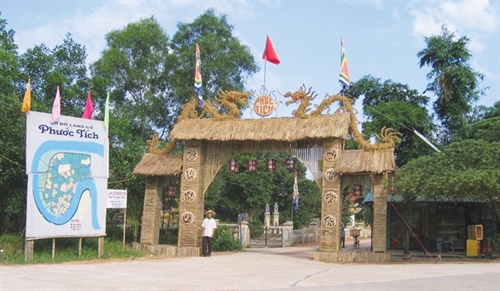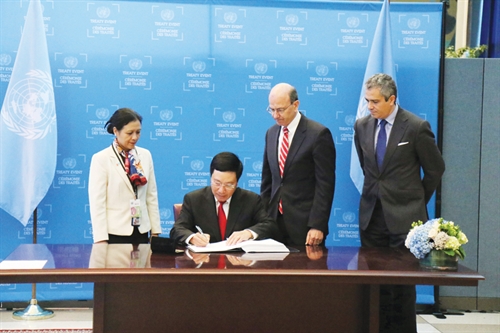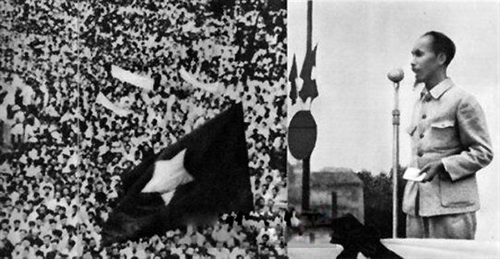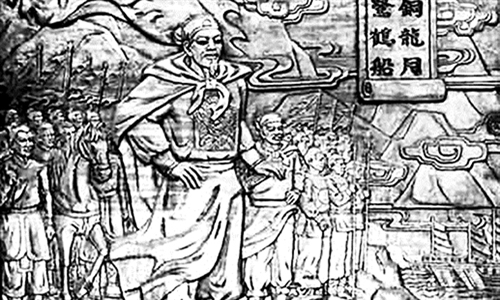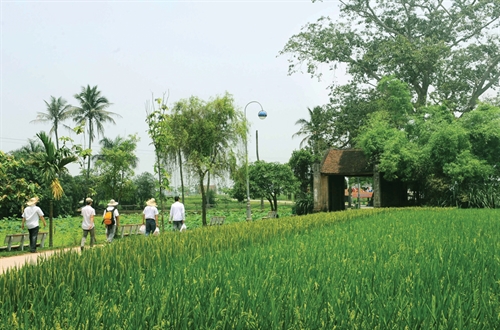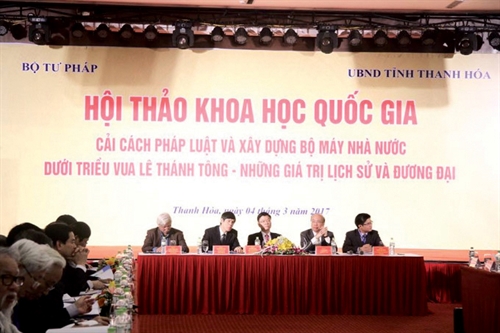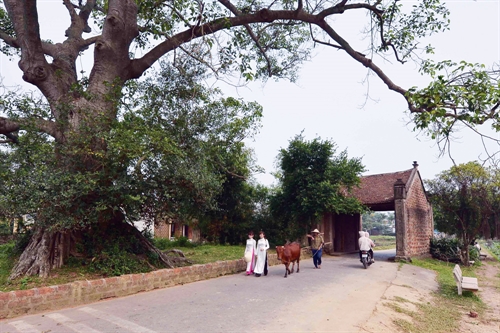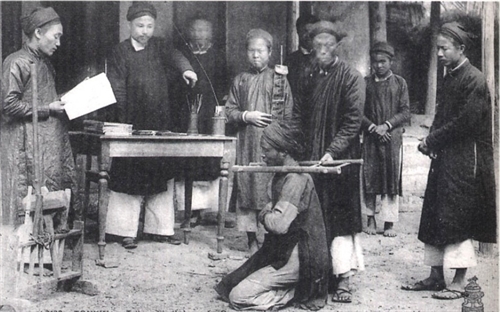In order to guarantee the king’s unified power, Vietnamese feudal regimes created and operated consistently a state power-overseeing mechanism with two systems: intra-state and extra-state. This writing only dwells on the system overseeing the operation of the state management apparatus from inside.
Truong Vinh Khang
State and Law Institute
Vietnam Academy of Social Sciences
Alongside the building of institutions to discharge the state’s tasks, Vietnamese monarchies attached importance to the oversight of the state management apparatus to affirm the king’s absolute power. The feudal history in Vietnam showed that the state power belonged to the king as dictated by the type of the state and the ruling ideology. According to Confucian perception, the king was the son of Heaven, who acted under the mandate of Heaven to rule the society. Under Vietnamese feudal regimes, the king held both secular and theocratic powers. He was the sole one empowered to make laws, appoint, promote, demote, reward or punish mandarins, offer sacrifices to the Heaven and confer tittles on deities.
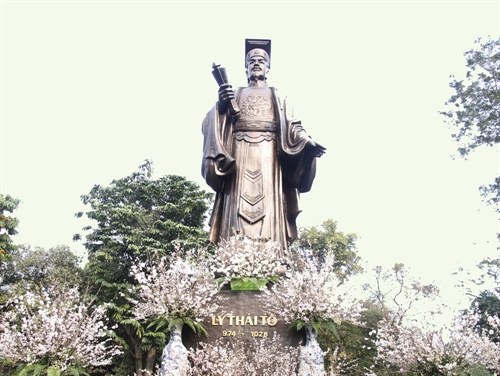 |
King Ly Thai To statue in Ly Thai To park, Hoan Kiem district, Hanoi__Photo: Thuy Duong/VNA |
Oversight via a system of central professional agencies
Through this system, independent oversight was performed by individual mandarins or professional bodies.
In the period of the Ly and Tran dynasties
In the early stage of the Ly dynasty (1010-1225), as the state machinery remained simple, state power oversight was performed mainly by the king himself through the building of the state apparatus and the assignment of duties to mandarins. Some mandarins were tasked to assist the king in controlling the state power via overseeing activities of the state management apparatus. At that time, there was no independent oversight body but only a full-time mandarin called Ta huu Gian nghi Dai phu responsible for inspecting mandarins at the central level and advising the king to fulfill his duties toward the Heaven and the commoners according to the Confucian ideology.
Later, when the state apparatus developed, oversight activities were organized more professionally on a larger scale. Under the reign of King Ly Thai To, the first ruler of the Ly dynasty, an oversight body was introduced under the name of Ngu su dai staffed with different mandarins titled Ngu su dai phu, Ngu su trung thua and Trung thua xa nhan. After the Tran dynasty was founded in 1225, Ngu su dai was maintained and reinforced with many full-time mandarins such as Thi ngu su, Giam sat ngu su, Ngu su trung tan, Ngu su trung thua, Ngu su dai phu and Chu thu thi ngu su. This body consisted of three institutes: Dai vien dan functioning to enforce the royal court regulations; Dien vien, supervising judicial matters; and Sat vien, overseeing royal court ceremonies.
 |
A portrait of King Minh Mang__Photo: Internet |
In the period of the Le So dynasty (1428-1527)
In this period, oversight activities were organized to supervise the state management apparatus established after the bureaucratic monarchy model. In 1460, the Le dynasty set up luc Bo (six ministries), including Bo Binh (in charge of military affairs), Bo Cong (in charge of construction, repair and dykes); Bo Hinh (in charge of legal and judicial matters), Bo Le (in charge of education, culture and healthcare), Bo Lai (in charge of organization and personnel affairs), and Bo Ho (in charge of finance, tax and civil status). At the same time, luc (six) Khoa, including Nam Khoa, Bac Khoa, Tay Khoa, Dong Khoa, Trung Thu Khoa and Hai Khoa, were founded to oversee the operation of the six ministries. In 1465, King Le Thanh Tong renamed these bodies to Binh Khoa, Cong Khoa, Hinh Khoa, Le Khoa, Lai Khoa and Ho Khoa, respectively.
Each khoa was headed by a mandarin titled Do cap su trung and assisted by a number of clerks: “21 for Lai Khoa, Le Khoa and Cong Khoa; 51 for Ho Khoa and Binh Khoa, and 32 for Hinh Khoa”[1].
The primary functions of luc Khoa were clearly defined in Hieu dinh quan che (mandarindom regulations) issued by King Le Thanh Tong in 1471.
“Conscription and demobilization fall under the charge of Bo Binh and the oversight of Binh Khoa; warehousing and delivery fall under the charge of Bo Ho and the oversight of Ho Khoa; if Bo Lai appoints untalented people, Lai Khoa can reject it; if Bo Le conducts a ceremony in a wrong order, Le Khoa may report to protest it; Hinh Khoa concludes on whether Bo Hinh’s adjudication is right or wrong; and Cong Khoa assesses Bo Cong whether it is hardworking or lazy.”[2]
Besides overseeing the six ministries, luc Khoa had the task to work with and scrutinize Ngu su dai in the recruitment, promotion, demotion and dismissal of mandarins. Although luc Khoa’s mandarins were selected, recruited or proposed for dismissal by the head of Ngu su dai, they had the right to protest if the latter improperly performed his duties[3].
Luc Khoa also had other duties such as discussing important national issues, inspecting criminal cases and hearing disputes.
Thanks to effective activities of luc Khoa, the ministries dared not to abuse their power, neglect their work or improperly perform their duties. They truly served as an effective tool to clean up activities of state bodies in a monarchical society.
Ngu su dai
As earlier mentioned, Ngu su dai was set up during King Ly Thai To’s time and was strengthened under the Tran dynasty.
Under the Le So dynasty, this body was established at the central level with such mandarins as Ngu su Trung thua, Ngu su Pho trung thua. Thi ngu su, Dien trung thi ngu su and a number of assisting mandarins. In each province, there was a Giam sat ngu su, supervisor-mandarin. Unfortunately, historical records revealed little about the organizational structure, powers and responsibilities of this body or the number and ranks of its mandarins in this period.
When Le Thanh Tong ascended the throne, he launched an administrative reform with focus on improving the organizational structure and enhancing the role and powers of oversight bodies. He strengthened Ngu su dai with four offices: Tu vu tinh functioning to take care of daily matters of Ngu su dai; Kinh lich ty in charge of registering cases; Chieu ma so tasked to keep records of cases; and An nguc so functioning to oversee criminal cases[4].
At the central level, Ngu su dai was staffed with a total of nine full-time mandarins and 30 assistants[5].
Ngu su dai could directly report to the king and had great powers and responsibilities, specifically:
First, to directly dissuade the king. In his decree on the establishment of Ngu su dai in 1429, King Le Thai To permitted its mandarins to frankly dissuade the king. In a royal proclamation of 1456, King Le Nhan Tong admonished mandarins: “Mandarins in Ngu su dai should assist the king in redressing mistakes, abandoning evil acts, and praising good deeds.”[6]
Second, to discuss political affairs. Although not directly involved in state management affairs, Ngu su dai mandarins might be called upon to discuss important national decisions. According to regulations on the priority order in discussions of political affairs, issued in 1487, when being asked at a royal court session, mandarins of luc Khoa and Ngu su dai would be the first to present their opinions, followed by mandarins in other offices.
Third, to denounce mandarins. This is the primary task of Ngu su dai to report directly to the king for investigation and punishment “mandarins who fail to observe regulations, take bribes, harass people...”[7] and “yamen in the royal court who commit corruption, injustice or violations.”[8]
Fourth, to participate in the recruitment, promotion and examination of mandarins. King Le Thanh Tong once told luc Khoa and Ngu su dai mandarins:
“Recommend virtuous and talented people, reject immoral persons... are big political affairs. You all hold the key positions of the royal court, acting as the ears and eyes of the Heaven’s son, recommend good people and reject bad ones are your duty”[9].
He enacted two important decrees in 1487 and 1489, permitting these mandarins to participate in the election and appointment of military commanders of regions and nominate persons to certain positions in Bo Hinh. On the examination of mandarins, Ngu su dai was assigned to take direct charge of holding annual examinations of some provincial mandarins. In 1484, the king issued a decree asking this body to re-examine mandarins nominated by heads of various offices and provinces.
Fifth, to inspect, oversee and directly hear criminal cases. The power of Ngu su dai in criminal cases demonstrated in its function of inspecting and questioning judicial bodies such as Bo Hinh, Dai ly tu (Court of Judicial Review) and Dinh uy ty (a body managing prisons), with a broader scope of oversight than that of Hinh Khoa. In the early period of the Le dynasty, Ngu su dai was assigned to hear only serious cases according to the king’s special orders, but not appellate cases[10]. From the time of King Le Nhan Tong (1442-1459), Ngu su dai mandarins could personally participate in hearing certain criminal cases[11].
Together with luc Khoa and Ngu su dai at the central level, there were Giam sat ngu su in 13 dao (provinces), which directly reported to Ngu su dai, and Hien sat su ty (oversight office) in regions. All these closely collaborated and coordinated with one another in discharging their tasks and mutually controlling and overseeing one another, forming a system of cross- and double- oversight in state inspection activities. These bodies acted as the ears and eyes of the king, assisting him in controlling his power and overseeing all activities of the state apparatus, contributing to purifying the administrations at all levels.
In the period from the Later Le to Nguyen dynasties
The state apparatus under the Later Le dynasty (1533-1789) was completely modeled after that of the Le So dynasty regarding state power control activities.
The professional oversight bodies established under the Nguyen dynasty (1802-1945) were basically similar to those in the Le So dynasty although there appeared some changes: Ngu su dai was renamed to Do sat vien headed by four mandarins, which operated independently without supervision by any other body. Each mandarin of Do sat vien could report directly to the king without asking for opinion of their head.
Oversight of local administrative bodies
Oversight of local administrative bodies is the oversight by superior administrations of subordinate administrations. These oversight activities were undertaken by heads of superior local administrative units in order to detect wrongdoings of their subordinates and mandarins of immediate subordinate level.
In the course of development, local state administrations in the feudal period in Vietnam were organized at different levels according to territorial-administrative units. Through different historical periods, the local administration levels basically included lo, dao or xu (province); phu, huyen or chau (district); and xa (commune).
Oversight of lo administrations
Lo were directly under the central administration. Through various dynasties, they were all organized in a way to guarantee control and oversight by the central administration.
Back to the Dinh dynasty (968-980), in 974, Emperor Dinh Tien Hoang divided the country into 10 dao corresponding to 10 army corps. Under the Ly dynasty, in 1010, Ly Thai To renamed dao” to lo headed by a mandarin called thong phan who held all administrative, judicial and military powers in the locality.
Under the Tran dynasty, in 1241, King Tran Thai Tong divided the country into 12 lo, each was headed by a mandarin called An phu chanh su. He was also assisted by two military mandarins. In this period, the administrative power was separated for the first time from judicial and military powers. This demonstrated that the central administration began to control the state power at the provincial level.
By the time of the Le So dynasty, through the administrative reform initiated by King Le Thanh Tong, the oversight of the state power in localities was directed at building a streamlined, elite and professional apparatus for enforcing the ruling policies of the king, specifically:
First, dividing dao into smaller units in order to limit the influence of provincial mandarins.
Second, separating administrative power, military power and judicial power at the provincial level by abolishing the position of head of dao and founding in each dao three bodies exercising the three powers, including Thua chinh su ty in charge of administrative affairs; Do binh su ty dealing with military affairs; and Hien sat su ty functioning to adjudicate legal disputes and oversee the other two bodies.
Third, enhancing the central administration’s oversight of provincial-level rulers by opening six Ngu su dai offices across the country, each overseeing two to three dao.
Under the Nguyen dynasty, in 1831, King Minh Mang reformed the national administrative apparatus, dividing the country into 30 provinces, except Thanh Hoa and the imperial city as independent zones. The provinces were classified into big, medium and small ones. A big province was headed by a mandarin called tong doc. A medium or small province was headed by a mandarin called tuan phu. To control and oversee the power of the provincial administrations and mandarins, Minh Mang appointed his close high-ranking mandarins to be tong doc and dispatched Giam sat ngu su to big provinces to oversee the ruling activities of mandarins. Giam sat ngu su had the right to detect and denounce mistakes committed by tong doc and lower-rank mandarins.
Oversight of chau administrations
Chau (district) served as the intermediate administrative level. In order to oversee chau, the Ly, Tran and Le dynasties adopted the policy of establishing family ties by marrying princesses to tribal heads being district chiefs, turning them into royal court mandarins. In couple with abiding by the court laws and regulations, chau chiefs were permitted to rule local inhabitants according to local customs and practices. Through this policy, the Le dynasty succeeded in strengthening the unified country, broadening the royal court’s influence to far-flung regions, placing the whole country under the central administration’s control.
In the initial stage of the Nguyen dynasty, King Gia Long established phu as the administrative unit linking tran or dinh with huyen, chau. Tri phu or tri huyen (district chiefs) were assigned to enforce tax collection, military conscription, food and corvee labor mobilization, and adjudicate ho (finance- and tax-related) and hinh (criminal) cases. Prior to 1829, district chiefs in ethnic minority regions had been selected on a hereditary basis. From 1829, King Minh Mang abolished this method of selection and replaced it by appointing talented and prestigious persons. Especially, to enhance the oversight by the central administration, in 1835 Minh Mang applied the regime of luu quan, appointing the royal court’s mandarins to directly rule mountainous districts.
Oversight of commune-level administrations
Throughout the history of feudal Vietnam, communes were always regarded as grassroots administrative units although they varied from period to period and from region to region. According to historical records, under the Ly dynasty the grassroots administrative units included huong, xa or sach. By the Tran dynasty, xa were classified into tieu xa (small commune), trung xa (medium commune) and dai xa (big commune). A commune was headed by a mandarin called xa xu or xa giam. Historical books did not reveal, however, whether these mandarins were appointed by the state or elected by commune inhabitants.
During the Later Le dynasty, fully aware that communes were the places where taxes, public labor and military conscripts were supplied for the state, King Le Thanh Tong reformed the commune-level administrations in order to better oversee their activities. First, he issued clear regulations on the division and separation and size of communes by number of households. Second, he changed the title of xa quan (commune mandarin) to xa truong (commune chief), introduced criteria for xa truong and ruled that xa truong were elected by people. Finally, he restricted and censored huong uoc (village code) - a tool to manage villages and communes. As a result, the commune-level operations were enhanced, the village autonomy was restricted, and the state’s oversight of commune-level administrations was guaranteed.
In the initial stage of the Nguyen dynasty, commune-level administrations were manipulated by village tyrants. In face of such situation, the feudal rulers then consolidated and oversaw commune-level administrations in two aspects: increasing the village autonomy and bureaucratizing the grassroots administration apparatus. Each commune-level administration was composed of two bodies: the policy-making body and the executive body. The policymaking body was not elected by people but was composed of qualified members as defined in the village code. These members were usually laureates, former mandarins, rich persons and prestigious villagers. The executive body was the council of village officials, including village chief, village deputy chief and village security chief, with the village chief as its head. Village chief and deputy chief were elected by villagers to perform such heavy tasks as managing village public land and young village males and overseeing tax payment and collection and military conscription. They also oversaw the village’s general affairs, maintain order and safety, and manage road repair, river dredging, irrigation, etc.
To oversee village chiefs, the Nguyen dynasty required that after being elected by villagers, a village chief had to be reported to the district mandarin for consideration and reporting to the provincial chief for written approval.
So, the intra-state oversight of local administrations at different levels in feudal Vietnam always aimed at ensuring the regime of centralism with the state power concentrated into the central administration headed by the king. However, a concession on village autonomy was also granted, which helped reduce the extreme despotism of the feudal state.
Special oversight
Special oversight was a form of extraordinary oversight performed directly by the king or by his oversight team, when necessary.
The king’s direct oversight was carried out through his incognito visits. The king personally toured the country to inspect activities of mandarins and commoners such as diking, agricultural production, and hearing special cases.
An oversight team was usually composed of virtuous, experienced and prestigious high-ranking mandarins. During its oversight tours in localities, the oversight team could handle at its own discretion wrongdoings of local mandarins.
Under the Nguyen dynasty, special oversight was assigned to Kinh luoc dai su, high-ranking mandarins sent by the king for inspection tours. Kinh luoc dai su were empowered to hand down death sentences to corrupt mandarins, except provincial-level mandarins whose death sentences had to be reported to and decided by the king. The special oversight regime helped the king enhance administrative management discipline and raise the ruling effectiveness of the state apparatus.
In addition to the intra-state oversight system presented above, there existed under Vietnam’s feudal dynasties the form of extra-state oversight, that is the oversight by commoners to assist the king in controlling his power and maintaining social order. This form of oversight demonstrated the spirit of democracy, helped prevent power abuse, corruption, retaliation by local mandarins and, at the same time, reflected the severity of law in the feudal period.-

